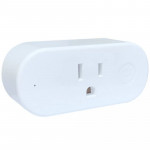
For many in the northern hemisphere, winter’s cold grip is just around the corner. With the cold comes snow, a beautiful photographic subject. Few photographers capture snow quite like photographer Nathan Myhrvold. His microscopic images of snowflakes showcase extraordinary detail and natural beauty.
Of his snowflake subjects, Myhrvold says, ‘Snowflakes are a great example of hidden beauty. Water, an incredibly familiar thing to all of us, is quite unfamiliar when you see it in this different view. The intricate beauty of snowflakes derives from their crystal structure, which is a direct reflection of the microscopic aspects of the water molecule.’
Myhrvold faced numerous challenges when photographing snowflakes. They are small, fragile objects only a few millimeters across. Further, snowflakes of course melt, but they also sublimate. Both processes break down the structure of snowflakes and reduce their sharp edges and details. Time and temperature both acted against Myhrvold, so he had to come up with solutions.

Over about 18 months, Myhrvold designed and built a custom snowflake camera. His camera, which he states is the highest-resolution snowflake camera in the world, uses a 100MP medium format Phase One image sensor adapted to a microscope objective. Myhrvold designed an optical path to fill the image area of the large medium format sensor, allowing him to capture large, sharp images.
To slow down the natural melting and vaporization process of snowflakes, the microscope has a cooling stage, allowing Myhrvold to capture enough images to create a focus stacked final photograph. Further, the camera is paired with high-speed LED lights to reduce the heat output of the lights and allow Myhrvold to quickly capture his images. The camera has a minimum shutter speed of 500ms.
Building the equipment is only one part of the challenge, you must also have beautiful snowflakes to work with. Myhrvold shot on location in Fairbanks, Alaska and Yellowknife, Northwest Territories, Canada. He says that some of the best snowflakes found were between -15° and -20° F (-26 to -29° C). In the images in this article, we see the following types of snow crystals: sector plates, stellar dendrites and fernlike stellar dendrites.

Source: dpreview.com









































